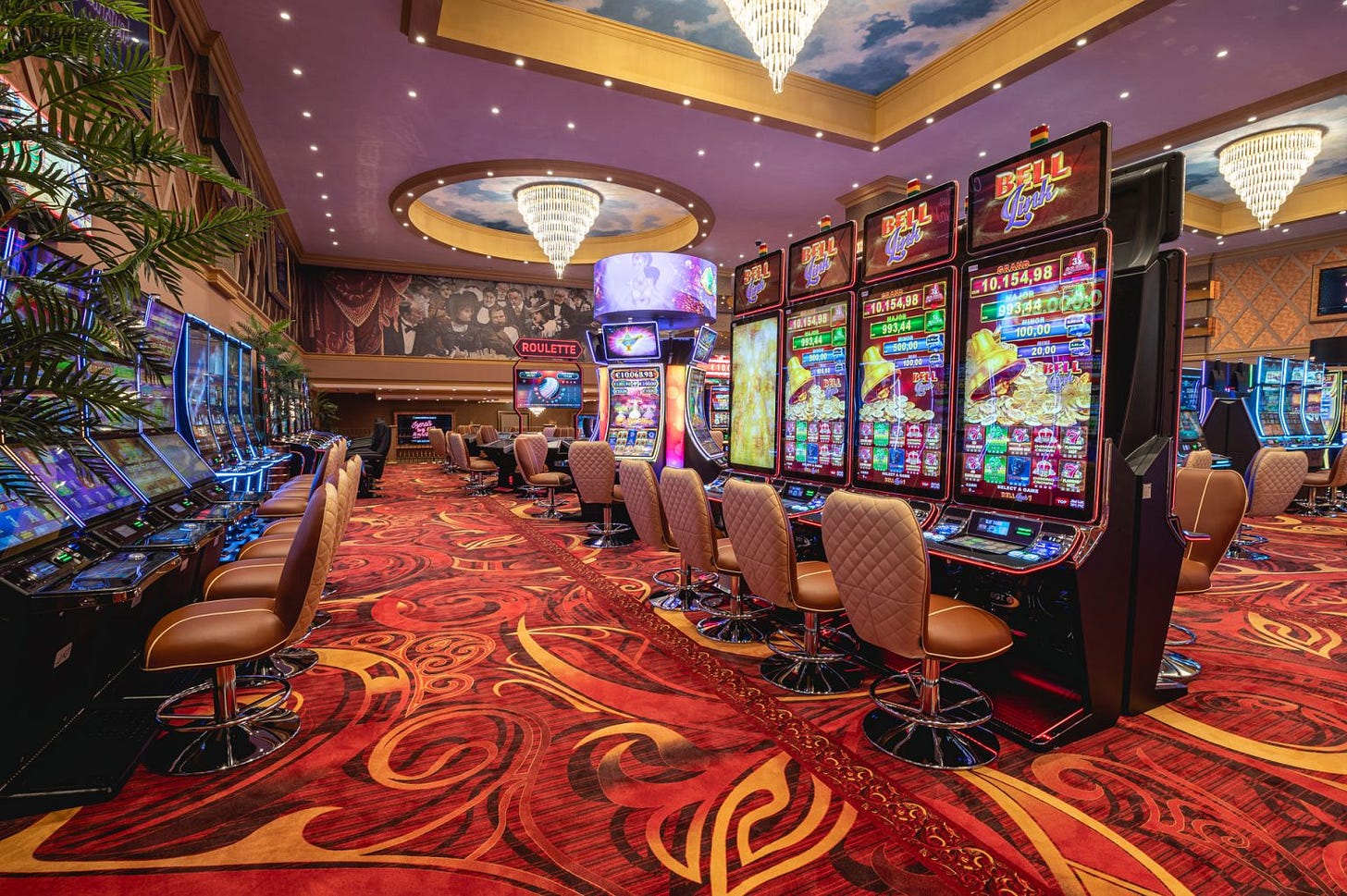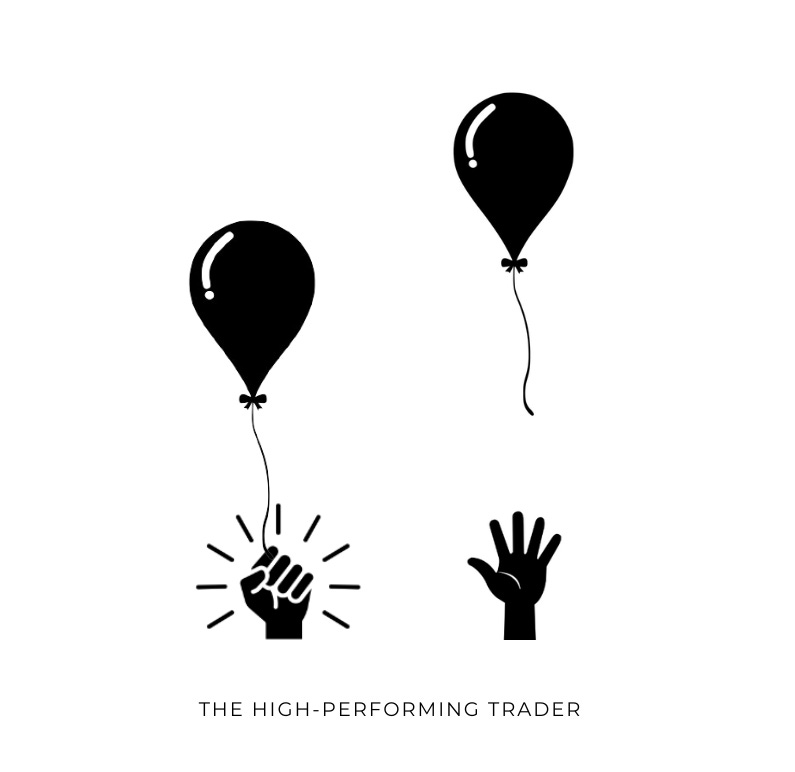It’s the first Sunday of the month, which means I’m unlocking a paid post for everyone.
Want to have access to coaching tools, mental frameworks, and live webinars? Upgrade to paid to get the full experience:
Have you ever wondered why trading feels like a constant battle?
Why even when you have a solid plan you still feel that tension to what the market does, especially inside the trade?
Most of the traders think the pressure comes from the market itself—the wild price swings, the sudden reversals, and so on.
But what if it doesn't?
What if the real source of your stress isn't the market, but your own mind's resistance to it?
The Silent War Inside
Think about it: the market doesn't care about your trade. It doesn't know your hopes or fears. It just moves. The tension we feel while trading? That’s a direct result of our mental fight against reality.
We hold a blueprint in our heads of what “should” happen:
“This stock should go up. My analysis is flawless.”
“The market should respect this support level before going up.”
And when the market deviates from our script, there's a clash — a battle between your expectations and what's actually happening. This internal friction creates the tension, the anxiety, the second-guessing. And ultimately, it pulls you out of the present moment.
Chances are, you’re often trading in the future. Trying to predict what’s next. Drawing levels you hope the market will respect. Placing confidence in the quality of your setup or your hours of research. But the best performance you can have doesn't come from prediction — it comes from presence.
This presence is something that I talk a lot about, and it’s the highest level of self-awareness — one that’s detached, impartial, non-judgemental. You stop projecting your fears onto the market or expecting it to meet your emotional needs.
It’s then that you achieve something powerful: the power of radical acceptance.
Because when you accept any scenario, nothing can hurt you. You become immune to external events. You’re centered.
The mental resistance is the invisible enemy. It makes you emotionally hypersensitive — a small dip isn't just a small dip; it's a reason to panic.
And this is what separates the struggling trader from the successful one: One is fighting a war they can't win; the other has surrendered.
The Power of Letting Go
The only way to win the mental war is to stop fighting it.
That might sound counterintuitive. But real strength comes from radical acceptance — not from forcing control, but from surrendering to what is. And no, this isn’t about being passive. Surrender is not giving up; it’s an active choice to stop resisting reality.
Imagine this: you’re driving to the beach with your kids and get a flat tire. You have two options. One: see it as an obstacle, resist what’s happening, get frustrated, and maybe take that frustration out on the tire, your kids, or yourself. Or two: you accept it fully. You stop wishing it were different. You see it as part of the day’s story. Suddenly, you’re teaching your kids how to change a tire. The moment becomes meaningful. That’s the power of surrender — only when you fully accept a situation can you see it differently.
And the same applies to trading.
I see traders wanting to change desperately, but one thing’s missing: the surrender. Change doesn’t happen just because you want it — it happens when you pair radical self-awareness with radical acceptance.
That means:
Noticing your pattern in real time.
Accepting your thoughts and feelings without judgment.
Letting the emotion pass through your body, instead of clinging to or avoiding it.
Only then do you have the space to welcome a new perspective. Until then, you’re just trying to pour more water into a full glass.
Radical Acceptance
Unshakable acceptance in trading comes down to embracing two fundamental truths:
The market is random.
On any given trade, anything can happen. You can do everything right and still take a loss. That’s not failure — that’s probability.You have zero control over the outcome.
You control your process: your entry, your stop, your position size. But not the outcome. The market will do what it does. Once you accept that, the pressure to “be right” disappears. You stop forcing trades. You stop chasing. Your mindset shifts — from prediction to probability.
The prediction trader is obsessed with being right.
The probability trader plays the long game. They accept losses as part of the process and let their edge play out over time.
You probably know this already. But has it sunk in?
Most traders acknowledge these truths intellectually, but they haven’t integrated them into their subconscious. That’s why you can hear “patience is key” for years, and then one day, it finally hits differently. You’d have never arrived at that new perspective of patience if you hadn’t gone through everything you went through. That’s experience.
But to integrate these truths, you first have to make space for them. And that requires facing your fears — not avoiding them.
If you’re afraid of loss, you might cope by moving your stop farther away… or by trailing it too tightly when a trade starts working. Either way, you’re not giving the trade room to breathe. You’re protecting yourself from pain — but also from reward.
So here’s what matters:
If you want to change your habits, you need to stop using the old coping mechanisms.
Expose yourself to discomfort — with awareness and presence — so your nervous system can recalibrate.
And one day you’ll surprise yourself. You’ll be rewarded with a winner you were able to let run, and that moment represents the beginning of an integral shift.
The Casino's Secret

Think about a casino.
The house doesn't win by predicting the next roll of the dice or the next card to be dealt. They don't care about the outcome of any single bet. They win because the odds are slightly in their favor, and it plays out over thousands and thousands of bets.
They know they have an edge.
They’ve built a system that’s designed to win over time. All they want is for people to keep playing. That’s why they invest in eccentric color design, music, free drinks, and entertainment. The more people engage with their system, the more predictable and profitable the results become.
The big difference?
In a casino, the environment is certain. The rules of the game are fixed and given to the player. This certainty grants the player a psychological safety net. They feel they have complete control because they know the rules. They don’t question the system. They just play.
But in trading, that certainty doesn’t exist.
The “rules” of the market are always shifting. Conditions change. Patterns evolve. And with that unpredictability comes more room for doubt, hesitation, and emotional decision-making.
After five consecutive losing trades, the player's side of their brain begins to question the casino they've built. This is where the resistance is born. The trader isn't fighting the market; they are fighting with themselves.
The probability trader acts as the house. They have an edge, they stick to their rules, and they unshakably accept the randomness of each individual outcome. They know that over a large number of trades, their edge will play out, and they will be profitable.
Consistently profitable traders don’t act like players — they act like the house.
And they build a system in which they can find comfort. Hence, the importance of a well-defined strategy. When you know what to do — and when to do it — you become less vulnerable to short-term noise.
You don’t need control over the market.
You need control over your process within it.
One Practical Step
For the next week, I want you to try something simple:
The next time you enter a trade and it moves against you, don’t react; just pause and observe.
Watch your mind start to resist:
“Why is it doing this?”
“This shouldn’t be happening.”
“I knew I shouldn’t have taken this trade.”
Notice the urge to fix, to interfere, to make the discomfort stop.
Divorce from the goal of being right or having a winning trade. Your new goal is to experience whatever you’re experiencing at the moment.
Just… do nothing.
The moment you simply witness your resistance, you create space between you and the reaction. You realize the tension isn’t coming from the market — it’s being created within you.
That kind of awareness is the first real step toward unshakable acceptance.
And ironically, acceptance is the foundation of control. Not control over outcomes — control over how you show up.
In Closing
If there’s one thing I want you to take away, it’s this:
Stop forcing change.
If it’s not working, then you likely still have a long way to go on self-acceptance and surrender. It doesn’t happen overnight, but if you try it in the key moments, you’re paving the way for change to happen.
And here’s the paradox: when you surrender to what is, change happens naturally without trying to work so hard. There’s no past or future, just the candles in front of your eyes and a plan to execute.
From that place, the ego disappears. There’s no right or wrong.
Only probabilities.
Love,
Sara
Related Reads:
The next step is yours.
Discover how my coaching can help you move beyond resistance and trade with presence:
Session Packages
6-Month Transformation Program
Explore my coaching options here.






🙏🔥
This one concept, radical acceptance, unlocks the door to letting go and being present. DBT focuses a lot on this. You did a wonderful job of putting it all together.
Will be reading this one many times.